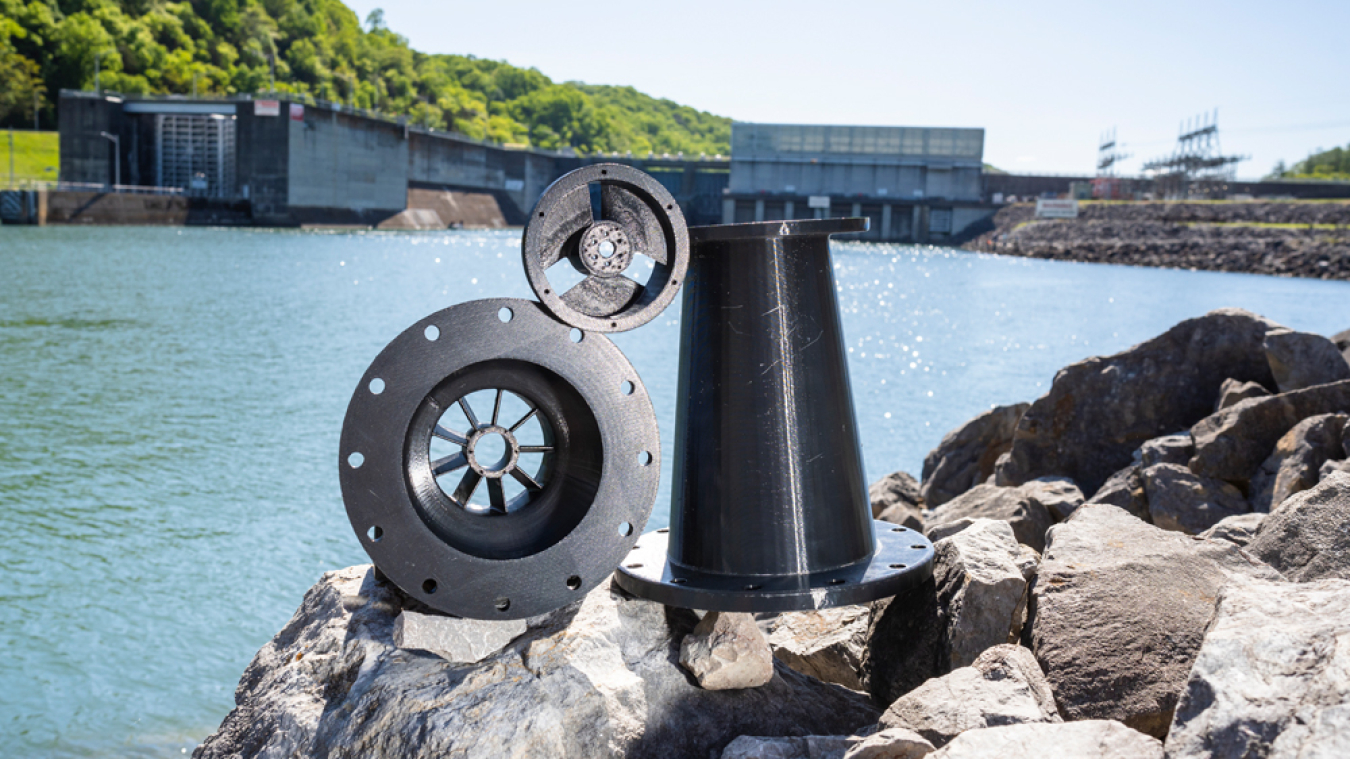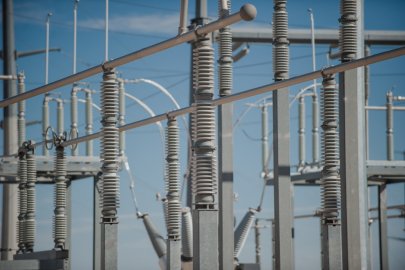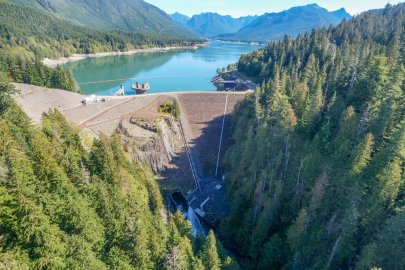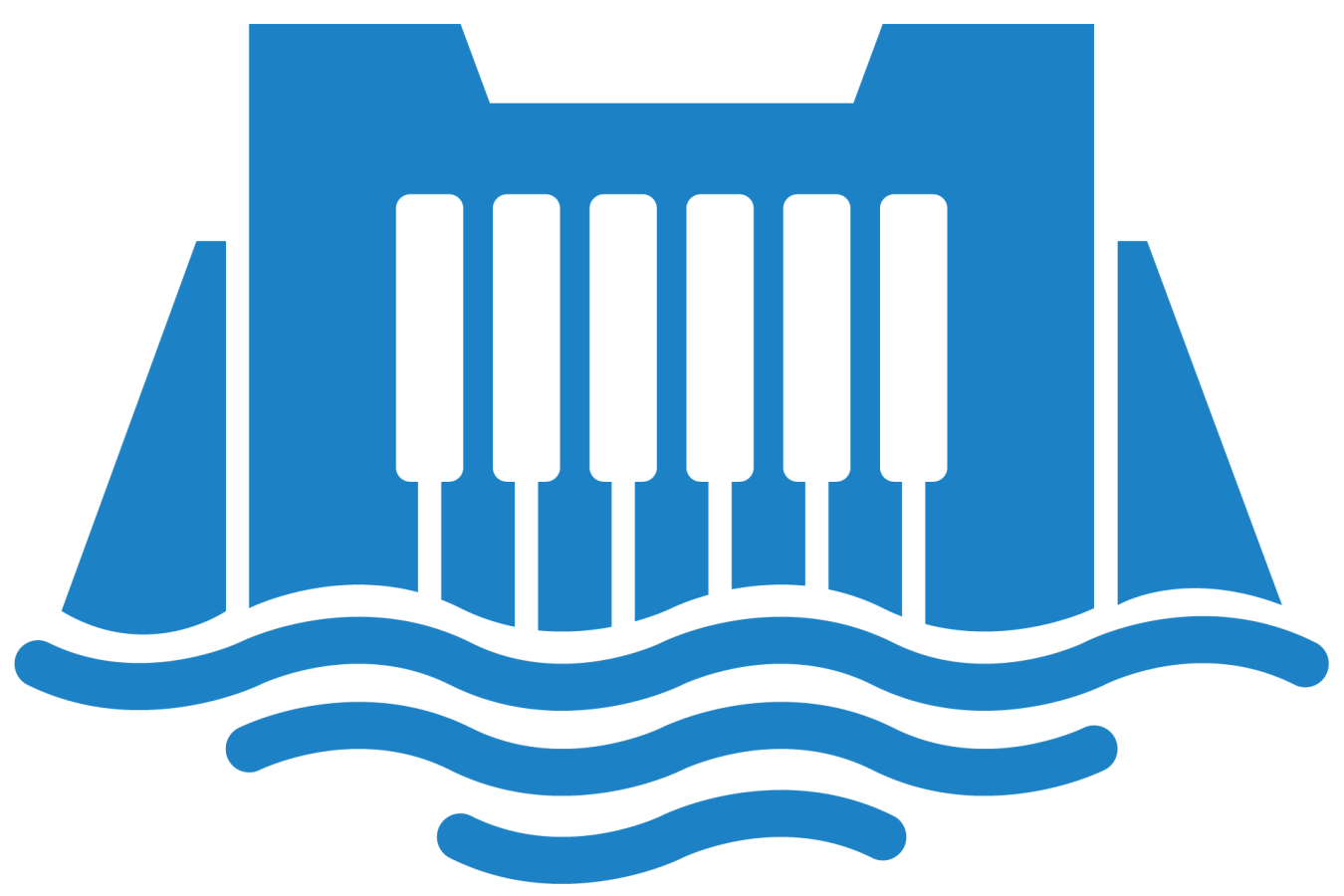A national laboratory report examines how advanced manufacturing and materials could benefit the hydropower sector by lowering operation costs and increasing the efficiency of the existing fleet and future facilities.
Water Power Technologies Office
March 14, 2024Hydropower Program
Innovations for Low-Impact Hydropower Growth
Project Name: Advanced Manufacturing for Hydropower
Project Team: Oak Ridge National Laboratory
Lead Recipient Location: Oak Ridge, Tennessee

In March 2023, Oak Ridge National Laboratory released a report examining how advanced materials and manufacturing could benefit the hydropower industry. The report explores how advanced materials could lower operation costs and increase the efficiency of the country’s existing hydropower fleet and future facilities. It also details the major challenges the hydropower industry faces as well as a variety of ways advanced manufacturing could help optimize the industry’s manufacturing.
The report outlines high-level manufacturing challenges the hydropower industry faces:
- Aging infrastructure and components: Because the average hydropower plant is more than 60 years old and nearing the end of its life span, many pieces of equipment are outdated and require repairs and/or upgrades.
- Supply chain issues: Many essential hydropower components are no longer manufactured domestically, meaning manufacturers are subject to shortages and long lead times.
- Environmental mitigations: Hydropower facilities need to meet increasingly higher standards of environmental performance. This could require technology that allows fish migration upstream and downstream of a dam.
- Evolving operational standards: The role of variable and intermittent renewables in the grid is increasing, which will require more flexible hydropower operations, ancillary services, and pumped storage.

A new report examines how advanced materials and manufacturing could benefit the hydropower industry by lowering operation costs and increasing the efficiency of the country’s existing hydropower fleet and future facilities.
After outlining these challenges, the report identifies four ways that advanced manufacturing and materials could improve current hydropower manufacturing infrastructure.
- Additive manufacturing: Additive manufacturing is the process of joining materials layer by layer from 3D data to manufacture parts. This method provides numerous benefits over traditional manufacturing techniques, including allowing for more complex designs and reducing waste.
- Novel machining and casting processes: Additive manufacturing will make possible the 3D-printing of sand molds, a crucial piece of the manufacturing process. Molten metal is poured into a sand mold containing a hollow cavity of a desired shape, which will later cool and be removed from the sand mold. Additionally, additives can be introduced into the machining process, resulting in faster, cheaper production and higher-quality components.
- Innovative materials: The hydropower manufacturing landscape could greatly benefit from the use of low-cost, high-performance materials that are newer to the market than traditional materials. These materials are often lighter, stronger, and more resistant to corrosion than traditional materials.
- Novel coating processes: Coating is essential to mitigate common issues such as biofouling (the growth of plants, algae, and other organisms under water), corrosion, or cavitation (erosion that occurs due to the formation and collapse of bubbles). Upgrading these systems can lengthen the life span of hydropower facilities.
This report explains how hydropower manufacturing infrastructure can benefit from advanced manufacturing and materials and mitigate some of the challenges facing the industry. Insights from this report will help inform the path forward for advanced manufacturing in hydropower.
-
 A new study and planning tool will help hydropower facility owners prepare and plan to interconnect their facilities to the grid.
A new study and planning tool will help hydropower facility owners prepare and plan to interconnect their facilities to the grid. -
 A national laboratory report examines how advanced manufacturing and materials could benefit the hydropower sector by lowering operation costs and increasing the efficiency of the existing fleet and future facilities.
A national laboratory report examines how advanced manufacturing and materials could benefit the hydropower sector by lowering operation costs and increasing the efficiency of the existing fleet and future facilities. -
 National laboratory researchers released NPD HYDRO, a comprehensive tool that helps users identify and prioritize opportunities to retrofit non-powered dams.
National laboratory researchers released NPD HYDRO, a comprehensive tool that helps users identify and prioritize opportunities to retrofit non-powered dams. -
 A new report outlines current gaps in hydropower testing capabilities in the United States and key improvements needed to expand hydropower technology validation and innovation.
A new report outlines current gaps in hydropower testing capabilities in the United States and key improvements needed to expand hydropower technology validation and innovation.
WPTO's hydropower e-newsletter features news on R&D and applied science to advance sustainable hydropower and pumped-storage technologies.
The WPTO e-newsletter brings funding opportunities, events, publications, & hydropower and marine energy updates directly to your inbox.


